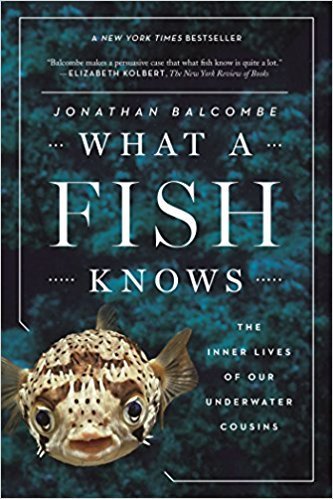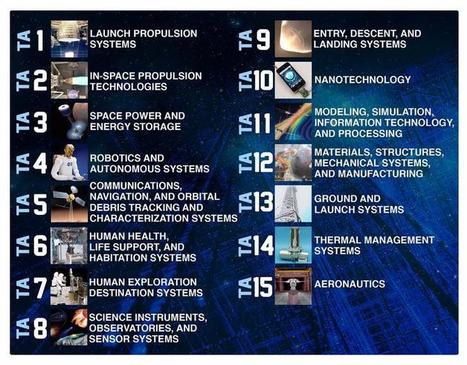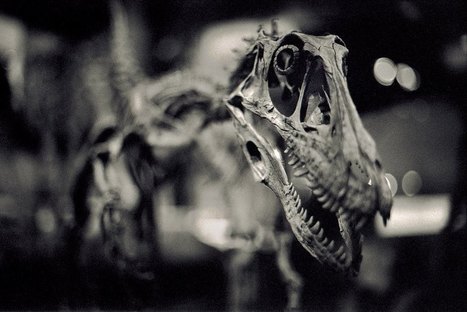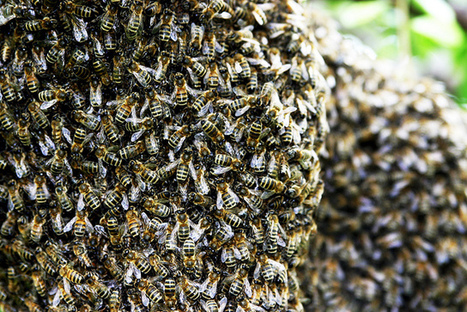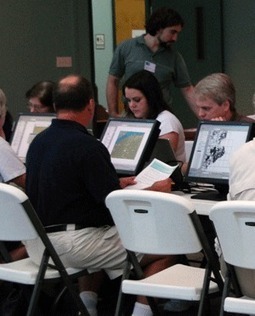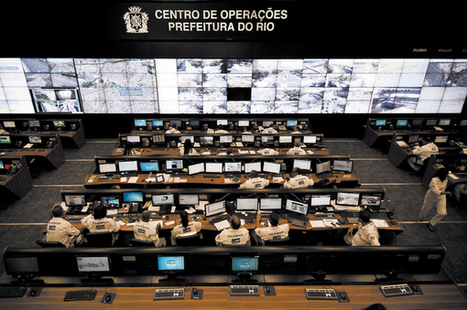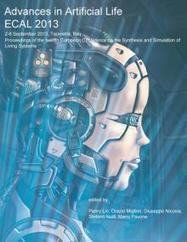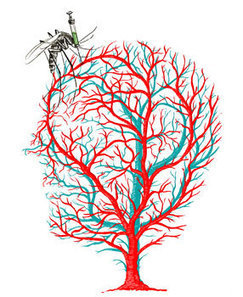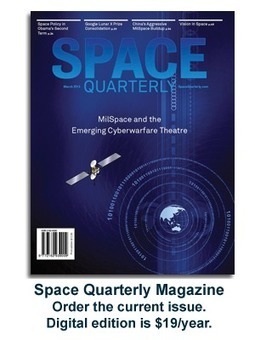 Your new post is loading...
 Your new post is loading...
There are more than thirty thousand species of fish―more than mammals, birds, reptiles, and amphibians combined. But for all their breathtaking diversity and beauty, we rarely consider how fish think, feel, and behave. In What a Fish Knows, the ethologist Jonathan Balcombe takes us under the sea and to the other side of the aquarium glass to reveal what fishes can do, how they do it, and why. Introducing the latest revelations in animal behavior and biology, Balcombe upends our assumptions about fish, exposing them not as unfeeling, dead-eyed creatures but as sentient, aware, social―even Machiavellian. They conduct elaborate courtship rituals and develop lifelong bonds with shoal-mates. They also plan, hunt cooperatively, use tools, punish wrongdoers, curry favor, and deceive one another. Fish possess sophisticated senses that rival our own. The reef-dwelling damselfish identifies its brethren by face patterns visible only in ultraviolet light, and some species communicate among themselves in murky waters using electric signals. Highlighting these breakthrough discoveries and others from his own encounters with fish, Balcombe inspires a more enlightened appraisal of marine life. An illuminating journey into the world of underwater science, What a Fish Knows will forever change your view of our aquatic cousins.
Via Complexity Digest
Synthetic biology approaches range from the introduction of unique features into organisms to the assembly of isolated biomacromolecules or synthetic building blocks into artificial biological systems with biomimetic or completely novel functionalities. Simple molecular systems can be based on containers on the nanoscale that are equipped with tailored functional modules for various applications in healthcare, industry or biological and medical research. The concept, or vision, of assembling native or engineered proteins and/or synthetic components as functional modules into molecular systems is discussed. The main focus is laid on the engineering of energizing modules generating chemical energy, transport modules using this energy to translocate molecules between compartments of a molecular system, and catalytic modules (bio-)chemically processing the molecules. Further key aspects of this discourse are possible approaches for the assembly of simple nanofactories and their applications in biotechnology and medical health.
Via Gerd Moe-Behrens
Startups could get a major lift from NASA if they can find a technology at the space agency that fits their commercial ambitions.
Via The Robot Launch Pad
Exploring the Future of Synthetic Biology in India and its Probable Pathways from Infancy to Maturity
Social systems are among the most complex known. This poses particular problems for those who wish to understand them. The complexity often makes analytic approaches infeasible and natural language approaches inadequate for relating intricate cause and effect. However, individual- and agent-based computational approaches hold out the possibility of new and deeper understanding of such systems. Simulating Social Complexity examines all aspects of using agent- or individual-based simulation. This approach represents systems as individual elements having each their own set of differing states and internal processes. The interactions between elements in the simulation represent interactions in the target systems. What makes these elements "social" is that they are usefully interpretable as interacting elements of an observed society. In this, the focus is on human society, but can be extended to include social animals or artificial agents where such work enhances our understanding of human society. This handbook is intended to help in the process of maturation of this new field. It brings together, through the collaborative effort of many leading researchers, summaries of the best thinking and practice in this area and constitutes a reference point for standards against which future methodological advances are judged.
Via Complexity Digest
Real world network datasets often contain a wealth of complex topological information. In the face of these data, researchers often employ methods to extract reduced networks containing the most important structures or pathways, sometimes known as `skeletons' or `backbones'. Numerous such methods have been developed. Yet data are often noisy or incomplete, with unknown numbers of missing or spurious links. Relatively little effort has gone into understanding how salient network extraction methods perform in the face of noisy or incomplete networks. We study this problem by comparing how the salient features extracted by two popular methods change when networks are perturbed, either by deleting nodes or links, or by randomly rewiring links. Our results indicate that simple, global statistics for skeletons can be accurately inferred even for noisy and incomplete network data, but it is crucial to have complete, reliable data to use the exact topologies of skeletons or backbones. These results also help us understand how skeletons respond to damage to the network itself, as in an attack scenario. Robustness of skeletons and salient features in networks
Louis M. Shekhtman, James P. Bagrow, Dirk Brockmann http://arxiv.org/abs/1309.3797
Via Complexity Digest, Eugene Ch'ng
Commercial aviation is feasible thanks to the complex socio-technical air transportation system, which involves interactions between human operators, technical systems, and procedures. In view of the expected growth in commercial aviation, significant changes in this socio-technical system are in development both in the USA and Europe. Such a complex socio-technical system may generate various types of emergent behavior, which may range from simple emergence, through weak emergence, up to strong emergence. The purpose of this paper is to demonstrate that agent-based modeling and simulation allows identifying changed and novel rare emergent behavior in this complex socio-technical system. (...) Agent-based modeling and simulation of emergent behavior in air transportation
Bouarfa S, Blom HA, Curran R, Everdij MH
Complex Adaptive Systems Modeling 2013, 1:15 (15 August 2013) http://dx.doi.org/10.1186/2194-3206-1-15
Via Complexity Digest
Huge deposits identified in Gulf of Mexico and beyond.
Evolutionary information theory is a constructive approach that studies information in the context of evolutionary processes, which are ubiquitous in nature and society. In this paper, we develop foundations of evolutionary information theory, building several measures of evolutionary information and obtaining their properties. These measures are based on mathematical models of evolutionary computations, machines and automata. Evolutionary Information Theory
Mark Burgin Information 2013, 4(2), 124-168; http://dx.doi.org/10.3390/info4020124
Via Complexity Digest
I'm enjoying reviewing my Kindle reading highlights with the "Daily Review" feature, which lets you flick through highlights and notes you've made in K
Author Lily Koppel tells the BBC about the Astronaut Wives Club, the women behind the first American men in space.
Scientists develop first large-scale map of cell division genes
CSL Recruitment
Cancer Research UK scientists have produced the first comprehensive map of the genes that co-ordinate the division and growth of yeast cells.
Learn GIS for free online from these university and institution based resources. Learn GIS on your own or supplement your existing geospatial education.
|
Network science offers a powerful language to represent and study complex systems composed of interacting elements from the Internet to social and biological systems. In its standard formulation, this framework relies on the assumption that the underlying topology is static, or changing very slowly as compared to dynamical processes taking place on it, e.g., epidemic spreading or navigation. Fuelled by the increasing availability of longitudinal networked data, recent empirical observations have shown that this assumption is not valid in a variety of situations. Instead, often the network itself presents rich temporal properties and new tools are required to properly describe and analyse their behaviour.A Guide to Temporal Networks presents recent theoretical and modelling progress in the emerging field of temporally varying networks, and provides connections between different areas of knowledge required to address this multi-disciplinary subject. After an introduction to key concepts on networks and stochastic dynamics, the authors guide the reader through a coherent selection of mathematical and computational tools for network dynamics. Perfect for students and professionals, this book is a gateway to an active field of research developing between the disciplines of applied mathematics, physics and computer science, with applications in others including social sciences, neuroscience and biology.
Via Complexity Digest
p. 305-313: With Asia having some of the fastest-growing economies with over 60% of the world’s population, 34% of the world’s arable land, and 36% of the world’s water resources, the region’s need to overcome formidable challenges and improve its total agricultural production and agricultural productivity are urgent... Feeding and nourishing a larger, more urban, and increasingly affluent Asian population sustainably and equitably will be an unprecedented challenge in the coming years. It will require a more holistic approach to address agricultural production an d productivity more effectively. Increasing production of food, feed, and fiber through the use of modern biosciences and biotechnology is only one among many strategies needed to meet this challenge. Access to modern science and technology will need to be supported by more comprehensive policies on investment, regulations, and education. In addition, while rural areas currently hold most of the world’s poor and hungry, and will continue to do so for many years to come, the urban areas of Asia will require more attention and distinct focus from national governments... Increasing productivity is a development imperative, whether urban or rural, if more agricultural production is to be achieved with reduced arable land, labor, and water in Asia. And therein lies the huge potential for biotechnology as a “green” technology. http://www.apo-tokyo.org/publications/wp-content/uploads/sites/5/Productivity-in-the-Asia-Pacific_Past-Present-and-Future-20151.pdf#page=320
Via Alexander J. Stein, Phillip Trotter
The modern world is complex beyond human understanding and control. The science of complex systems aims to find new ways of thinking about the many interconnected networks of interaction that defy traditional ...
The main aim of the Symposium is to facilitate the meeting of people working on different topics in different fields (mainly Economics, Finance and Computer Science) in order to encourage a structured multi-disciplinary approach to social sciences. Presentations and keynote sessions center around multi-agent modelling, from the viewpoint of both applications and computer-based tools. The event is also open to methodological surveys. The event will be hosted by Social Simulation 2014, the 10th Conference of the European Social Simulation Association at the Universitat Autonoma de Barcelona, Barcelona, Spain.
September 1-5th, 2014. http://essa2014.org
Via Complexity Digest, Frédéric Amblard
Some 3.5 billion people — half of humanity — now live in cities. Cities magnify human endeavours: they account for much more than half of humanity's pollution, energy consumption, crime and disease spread, while also incubating the lion's share of innovations, technology, art and entertainment. A sustainable, equitable future on our crowded planet will require fundamental changes in how cities operate. In Smart Cities, Anthony Townsend examines how information technology is shaping the development of 'smart' cities. Information technology: Slouching towards utopia
Melanie E. Moses
Nature 502, 299–300 (17 October 2013) http://dx.doi.org/10.1038/502299a Smart Cities: Big Data, Civic Hackers, and the Quest for a New Utopia
Anthony M. Townsend W. W. Norton: 2013.
ISBN: 9780393082876 http://tinyurl.com/mzyxmjz
Via Complexity Digest
ECAL 2013, the twelfth European Conference on Artificial Life, presents the current state of the art of a mature and autonomous discipline collocated at the intersection of a theoretical perspective (the scientific explanations of different levels of life organizations, e.g., molecules, compartments, cells, tissues, organs, organisms, societies, collective and social phenomena) and advanced technological applications (bio-inspired algorithms and techniques to building-up concrete solutions such as in robotics, data analysis, search engines, gaming). Advances in Artificial Life, ECAL 2013 Proceedings of the Twelfth European Conference on the Synthesis and Simulation of Living Systems Edited by Pietro Liò, Orazio Miglino, Giuseppe Nicosia, Stefano Nolfi and Mario Pavone http://mitpress.mit.edu/books/advances-artificial-life-ecal-2013
Via Complexity Digest
This paper presents a heuristic proof (and simulations of a primordial soup) suggesting that life—or biological self-organization—is an inevitable and emergent property of any (ergodic) random dynamical system that possesses a Markov blanket. This conclusion is based on the following arguments: if the coupling among an ensemble of dynamical systems is mediated by short-range forces, then the states of remote systems must be conditionally independent. These independencies induce a Markov blanket that separates internal and external states in a statistical sense. The existence of a Markov blanket means that internal states will appear to minimize a free energy functional of the states of their Markov blanket. Crucially, this is the same quantity that is optimized in Bayesian inference. Therefore, the internal states (and their blanket) will appear to engage in active Bayesian inference. In other words, they will appear to model—and act on—their world to preserve their functional and structural integrity, leading to homoeostasis and a simple form of autopoiesis. Life as we know it
Karl Friston J. R. Soc. Interface 6 September 2013 vol. 10 no. 86 20130475 http://dx.doi.org/10.1098/ rsif.2013.0475
Via Complexity Digest
Standford Medicine Summer 2013 Special Report
The concepts of evolution and complexity theory have become part of the intellectual ether permeating the life sciences, the social and behavioral sciences, and, more recently, management science and economics. In this book, John E. Mayfield elegantly synthesizes core concepts from multiple disciplines to offer a new approach to understanding how evolution works and how complex organisms, structures, organizations, and social orders can and do arise based on information theory and computational science. Intended for the intellectually adventuresome, this book challenges and rewards readers with a nuanced understanding of evolution and complexity that offers consistent, durable, and coherent explanations for major aspects of our life experiences. Numerous examples throughout the book illustrate evolution and complexity formation in action and highlight the core function of computation lying at the work's heart.
Via Complexity Digest
When the iPhone was new, Steve Jobs showed one to Alan Kay and asked him if it was “good enough to criticize.” Kay, a computing pioneer, had been a hero to Apple’s founder: in 1972, when much of the world was still using magnetic tape, he had proposed to his colleagues at Xerox’s Palo Alto Research Center a small, portable, and, above all, personal computer called the Dynabook...
NASA Selects 31 Space Biology Research Proposals
Space Ref (press release)
NASA's Space Biology Program will fund 31 proposals to help investigate how cells, plants and animals respond to changes in gravity.
|



 Your new post is loading...
Your new post is loading...
